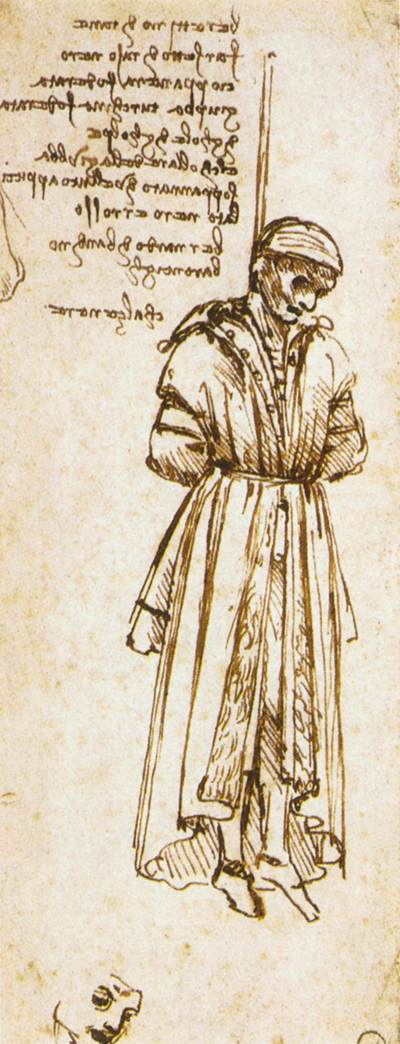Life under Lorenzo de’ Medici 1469-1492
One of the artists most closely associated with Lorenzo de’ Medici (Lorenzo the Magnificent) and his circle was Sandro Botticelli. He painted La Primavera for the 1482 wedding of one of Lorenzo’s young cousins named Lorenzo di Pierfrancesco de’ Medici. Works of artists such as Botticelli capture a sense of life in Florence under Lorenzo de’ Medici.
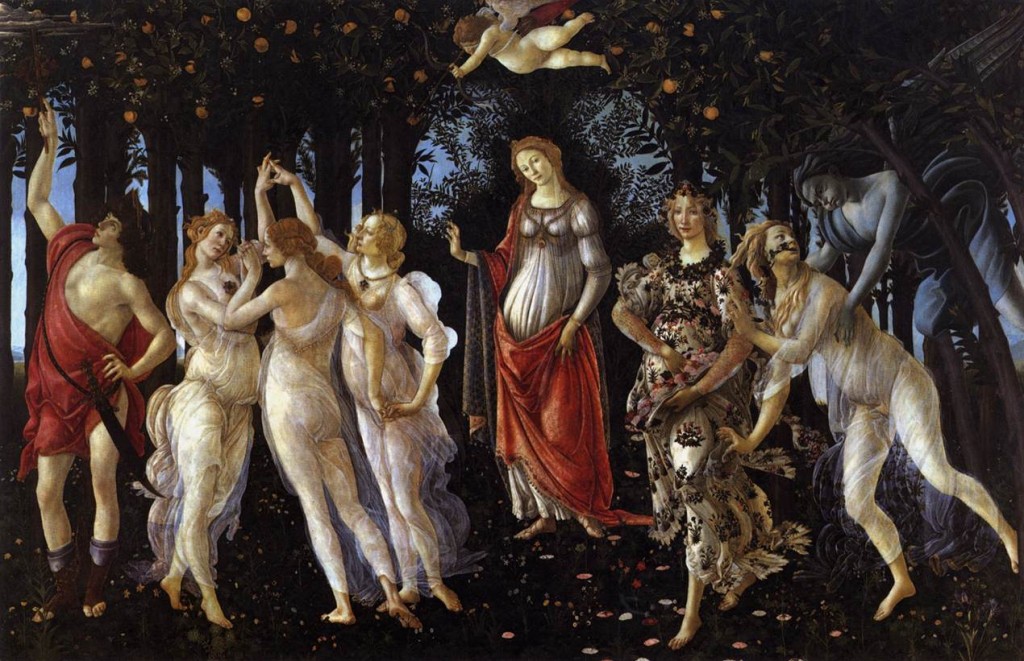
Primavera means “spring”in Italian. The freshness of this painting, the lithe and graceful movement of the figures, could be said to represent the blossoming of the arts and learning in fifteenth-century Florence.
It was the springtime of the Renaissance.
Sandro Botticelli, Primavera, detail of the three Graces
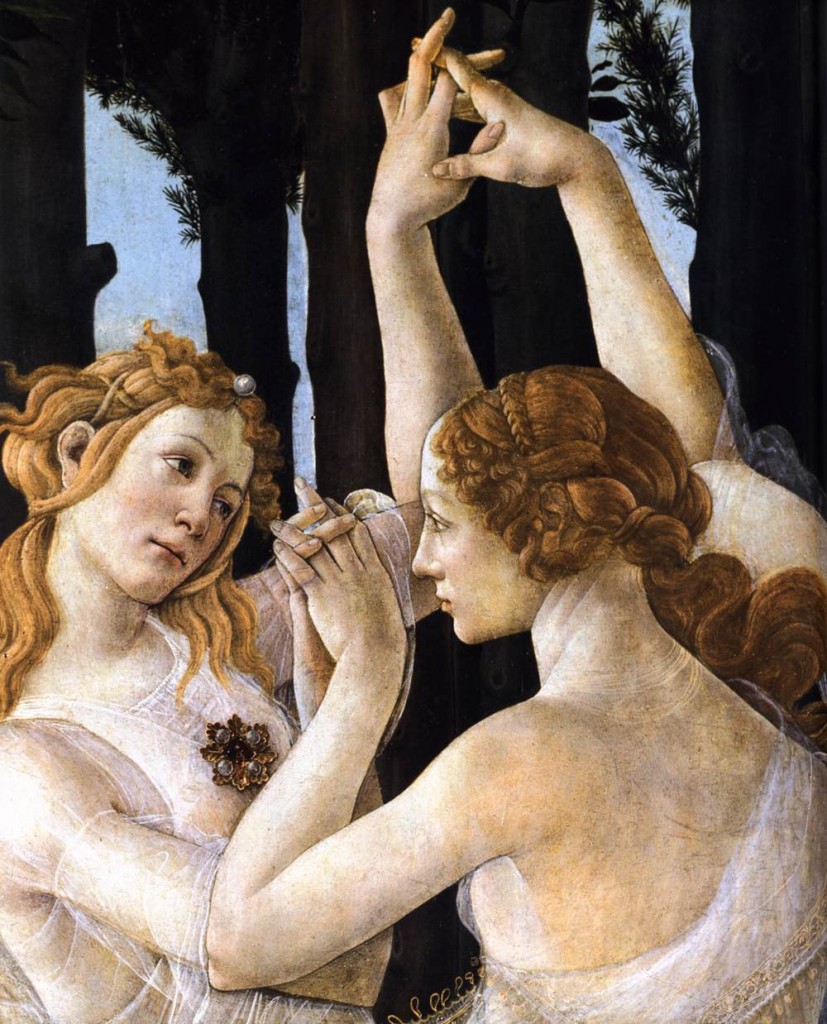
Botticelli painted many works for the Medici family. This Adoration of the Magi contains portraits of a number of members of the Medici family, with Lorenzo’s grandfather Cosimo kneeling at the feet of the Christ child.
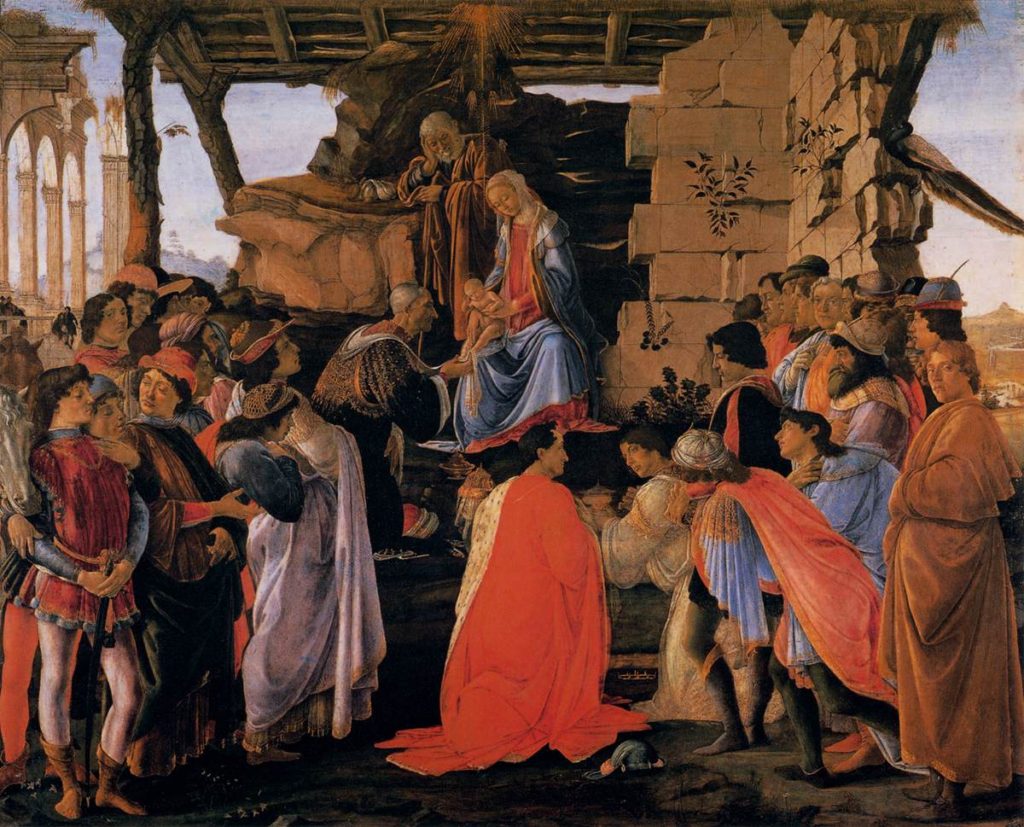
The figure of Lorenzo de’ Medici stands to the side of the sacred scene gazing down in a pensive mood.
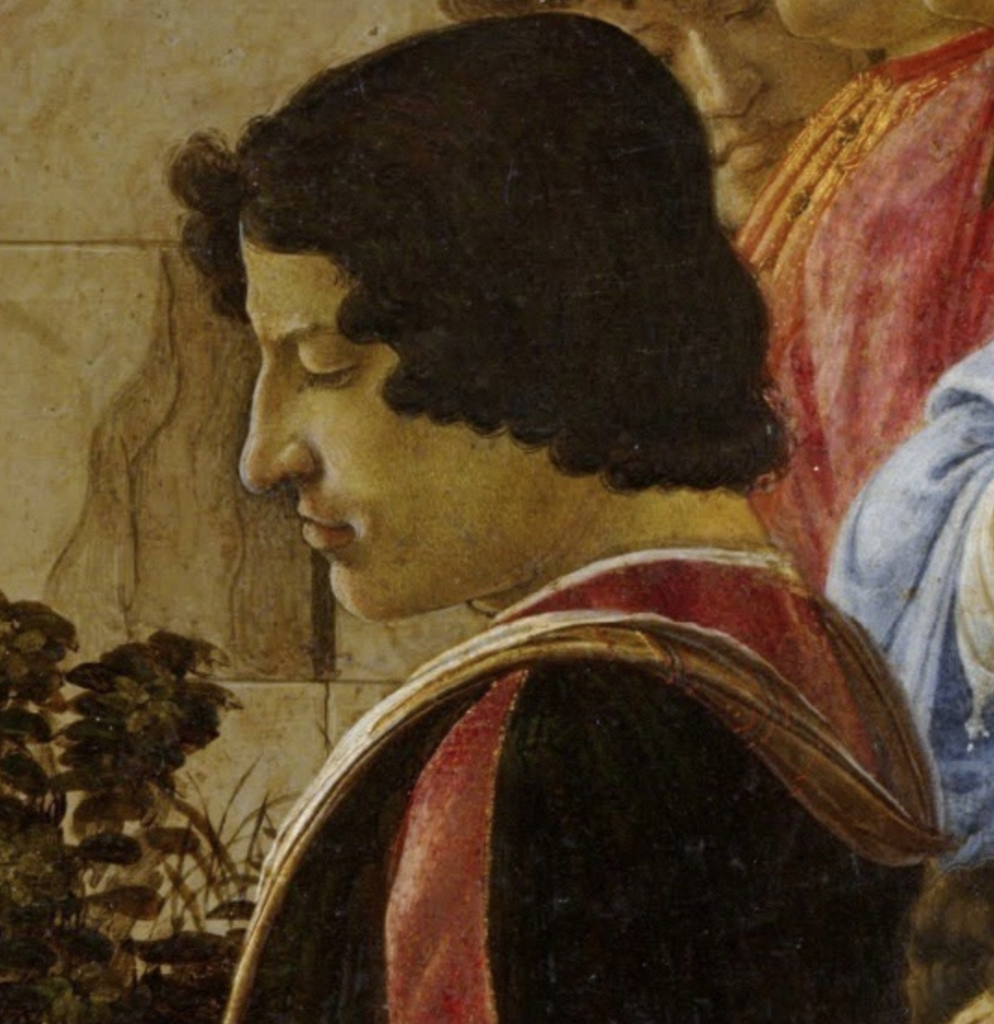
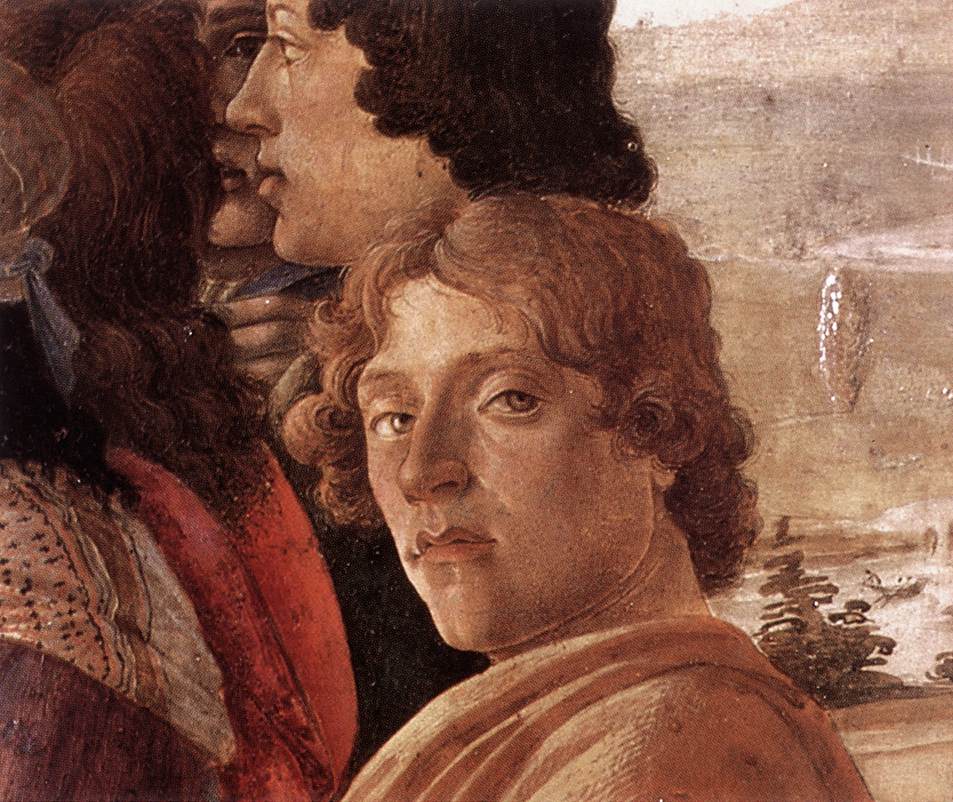
Botticelli also included a self-portrait in this painting. The artist looks out directly toward the viewer
Botticelli was not the only artist to portray the Medici. Andrea del Verrocchio sculpted this bust when Lorenzo was at the height of his power as de facto ruler of Florence.
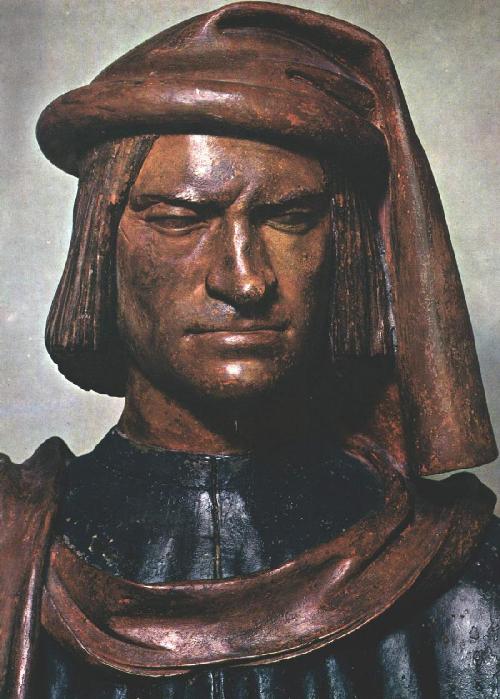
Domenico Ghirlandaio included Medici portraits in this fresco from the Sassetti Chapel.
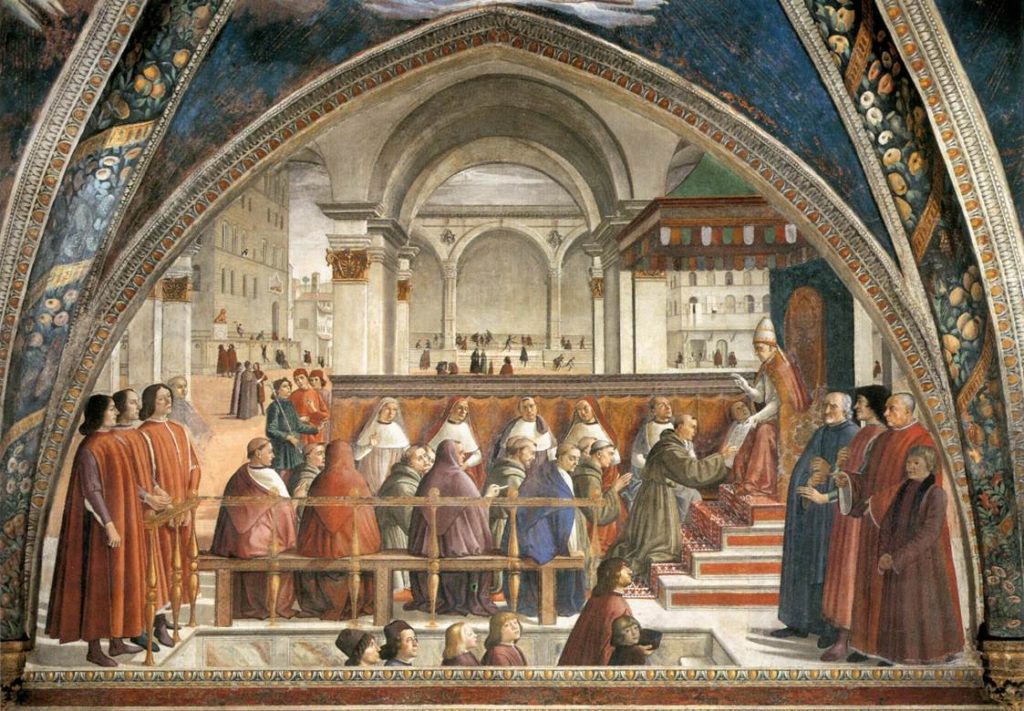
Ghirlandaio has portrayed Lorenzo in profile, flanked by business associates and political allies.
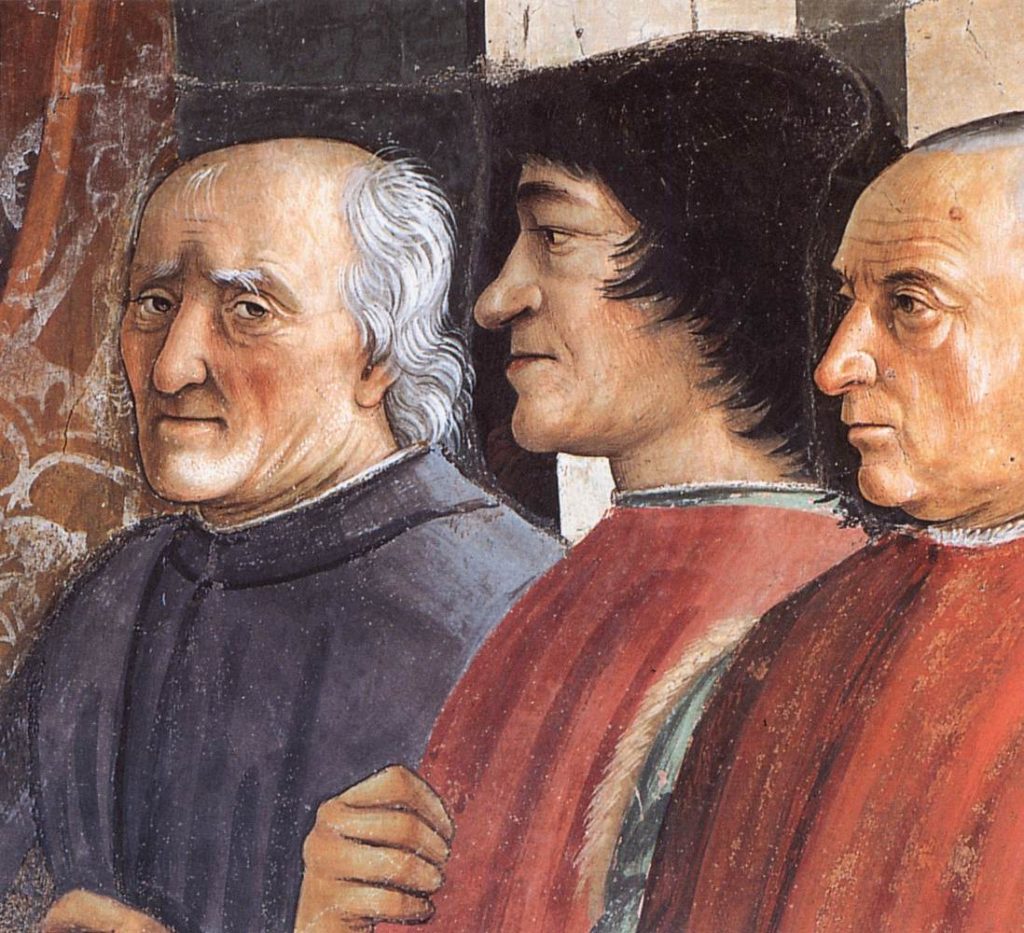
Ghirlandaio also included a portrait of the poet Angelo Poliziano, tutor to Lorenzo’s children. Beside Poliziano is the young Giulio de’ Medici, son of Lorenzo’s brother Giuliano.
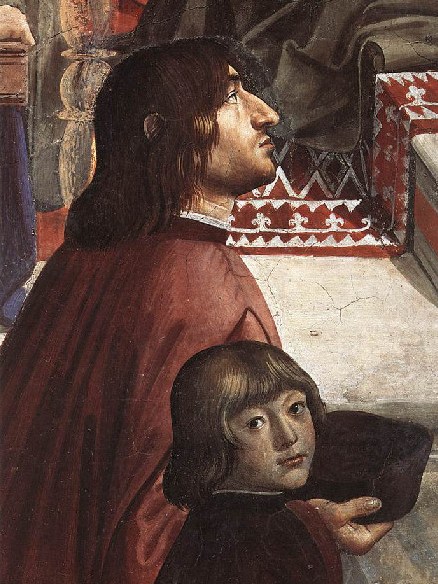
In the fresco of The Angel Appearing to Zacharias, Ghirlandaio represents prominent humanists. Left to right: Marsilio Ficino, Cristoforo Landino, Greek scholar Demetrius, Angelo Poliziano
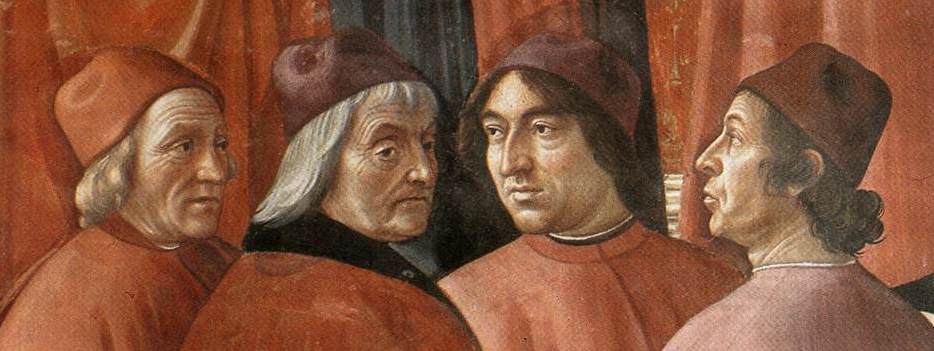
With Medici patronage, Marsilio Ficino was able to translate the works of Plato into Latin.
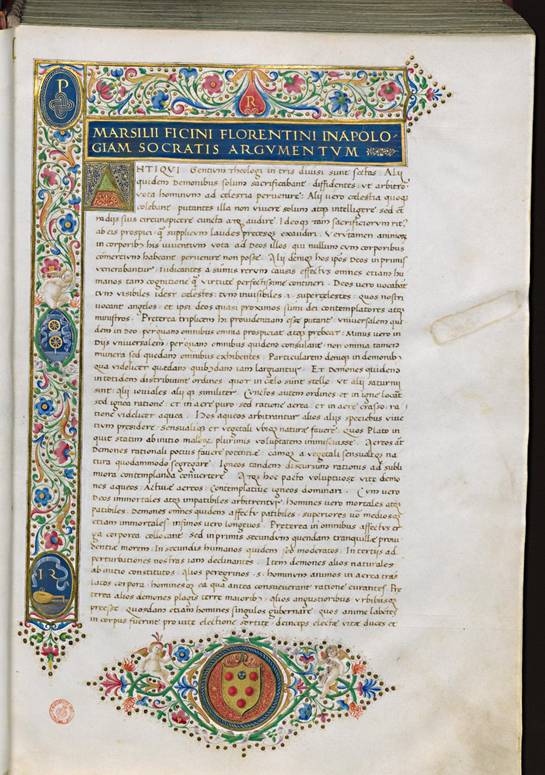
Scholars came from all over Europe to study with Ficino at his Platonic Academy.
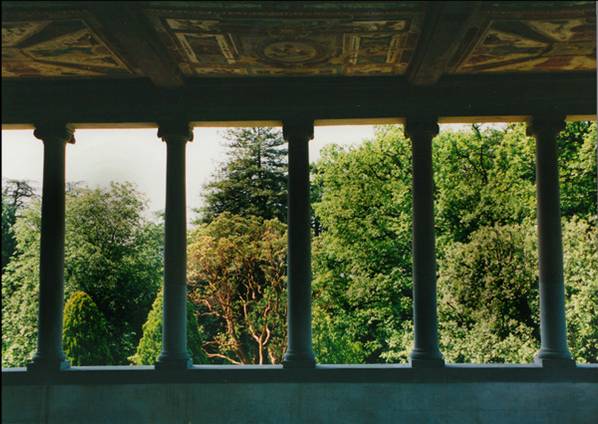
Lorenzo added greatly to the library of his grandfather Cosimo, especially adding many priceless Greek manuscripts
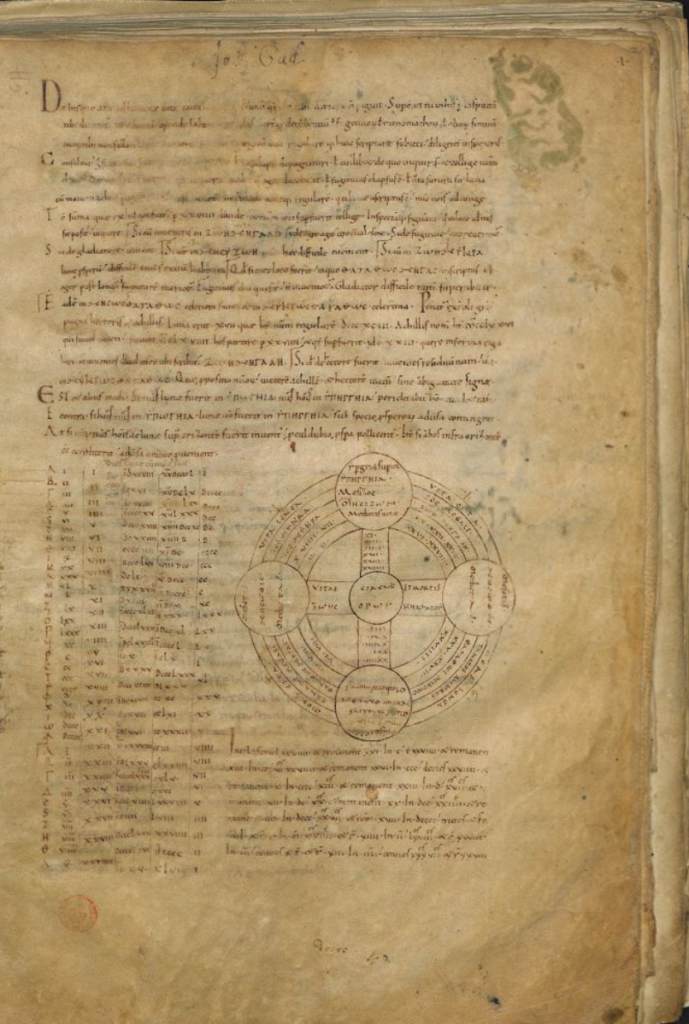
The painter Sandro Botticelli, part of Lorenzo’s “brigata,” incorporated concepts of ideal Platonic beauty:
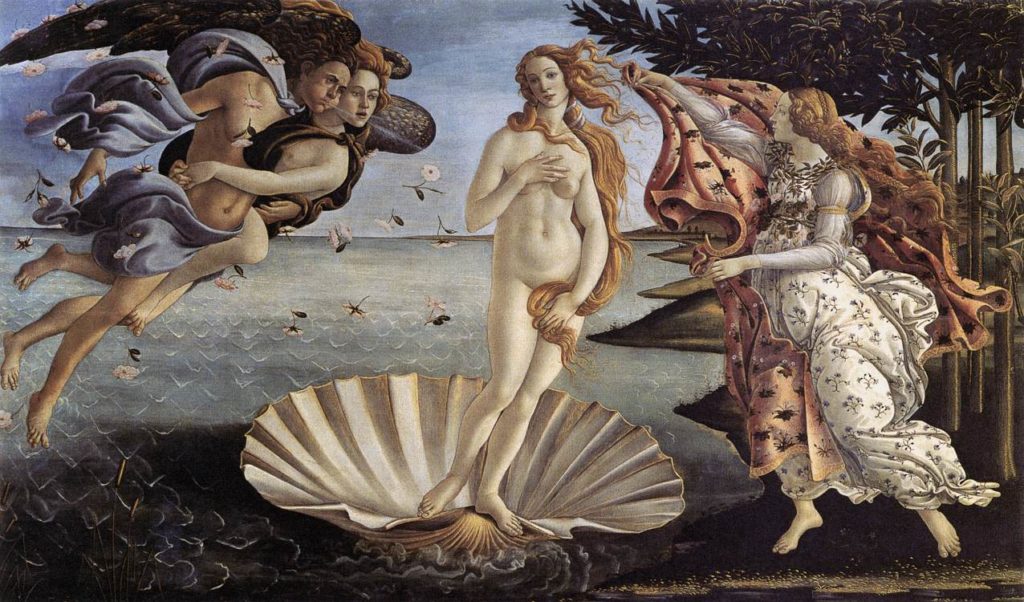
Ghirlandaio’s paintings, on the other hand represented real women in his sacred frescoes. This painting prominently features the donor’s daughter, Ludovica Tornabuoni:
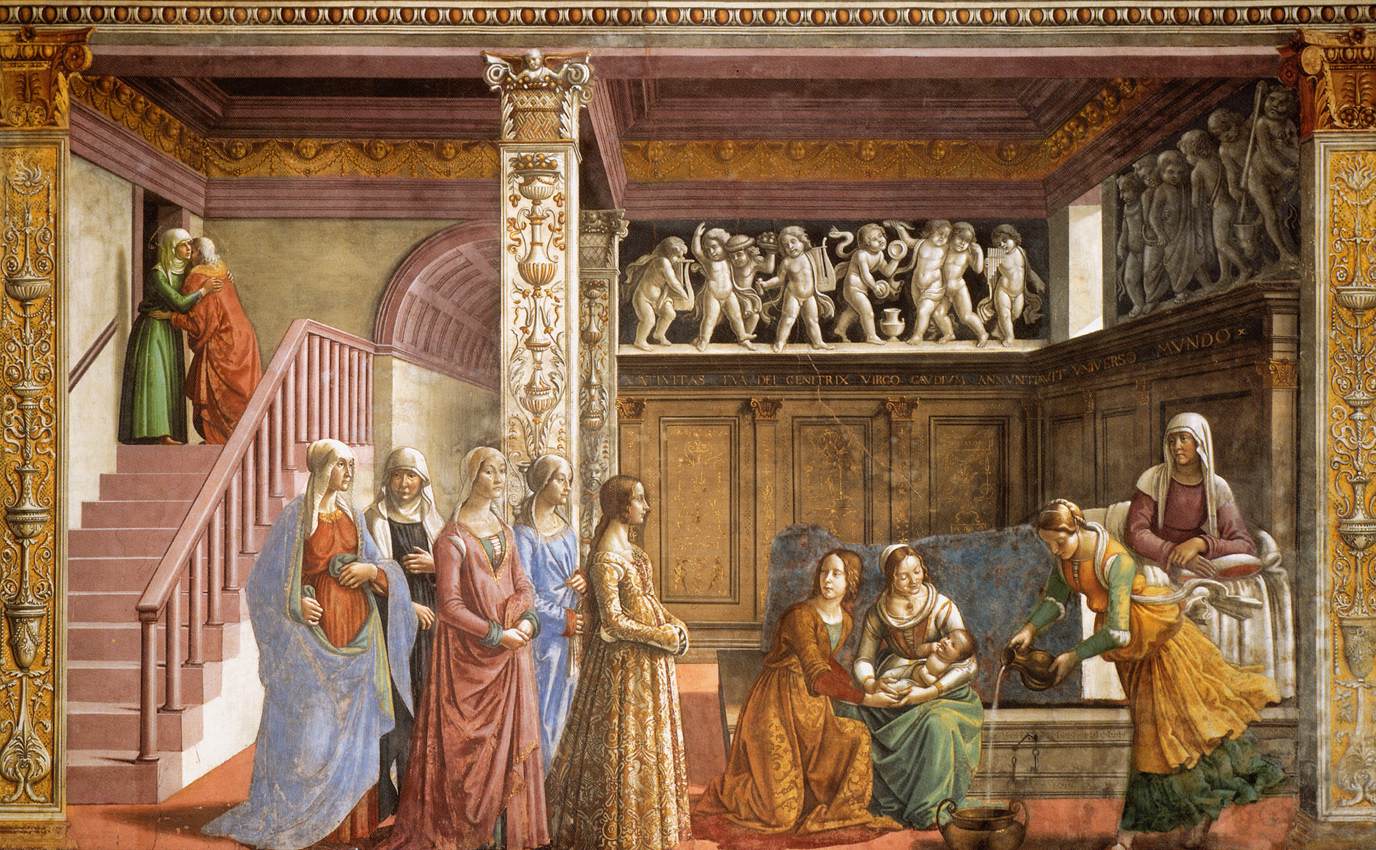
In the same chapel, Ghirlandaio portrays the mother of Lorenzo the Magnificent, Lucrezia Tornabuoni:
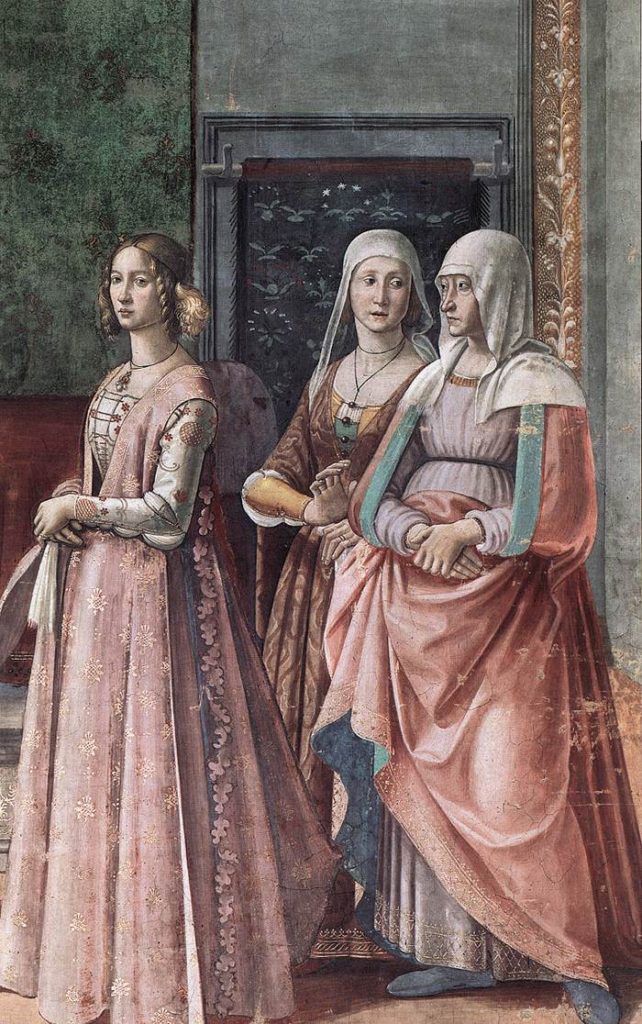
Lucrezia Tornabuoni was an accomplished poet. Here is a page from a manuscript of her Sacred Poems:
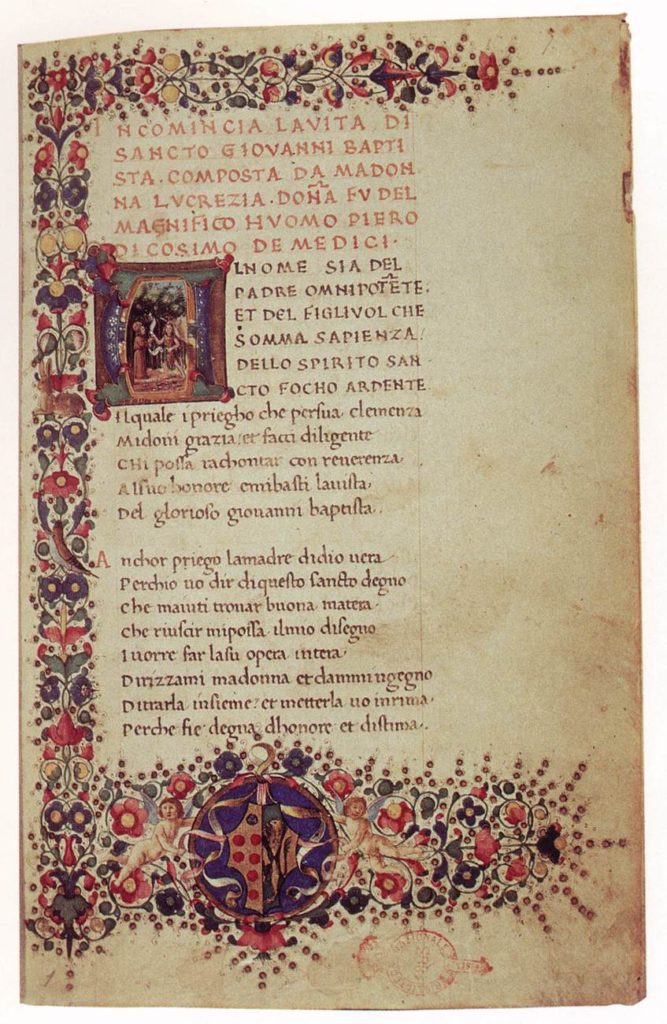
Despite their central role in Florentine arts and culture, the Medici had enemies among the elite who allied with Pope Sixtus IV and conspired to assassinate Lorenzo and his brother.
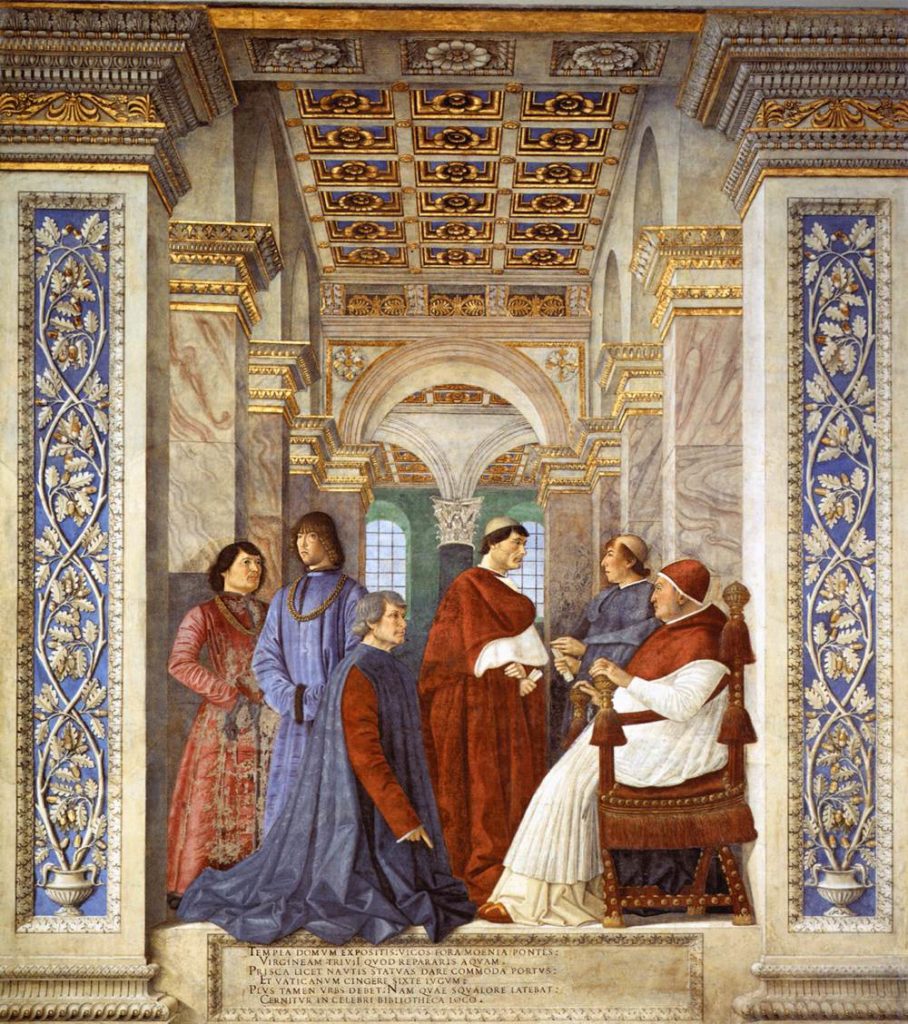
The Pazzi Conspiracy was carried out in the Duomo of Florence during High Mass on April 26, 1478
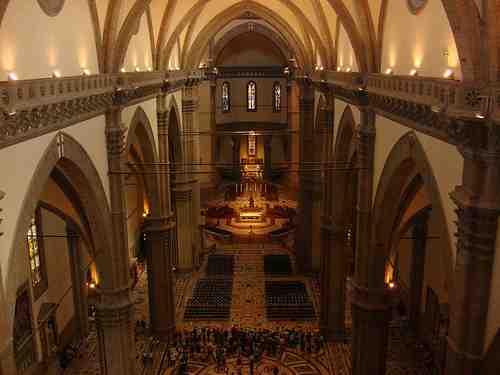
Verrocchio’s bust of Lorenzo’s brother Giuliano de’ Medici, killed in the Pazzi Conspiracy:
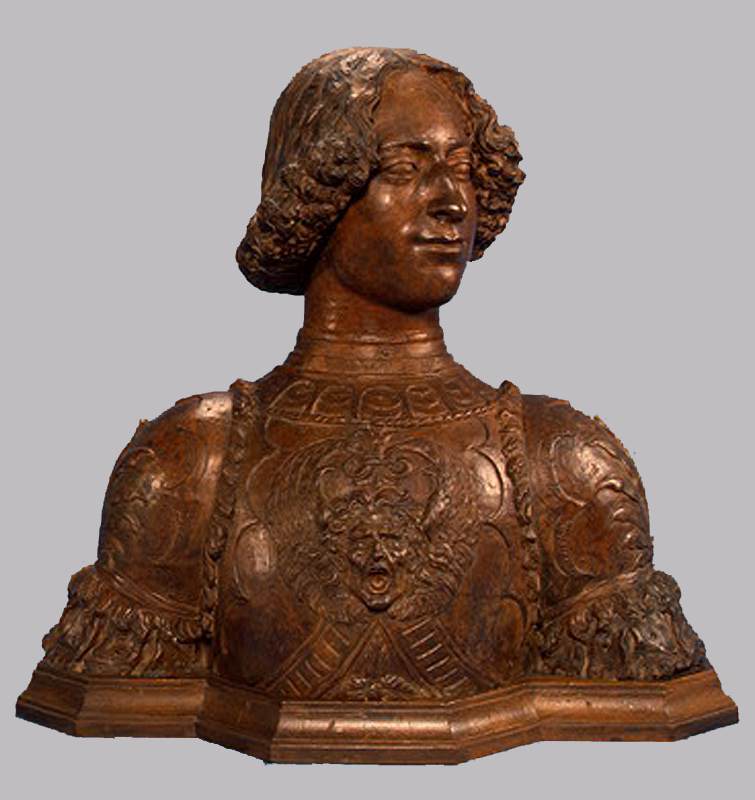
Lorenzo survived, however; his justice was swift and brutal.
